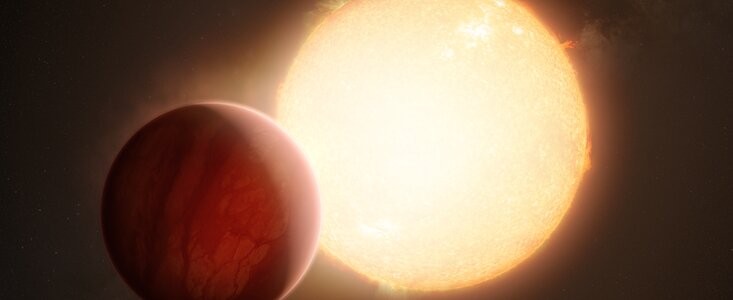The heaviest element ever identified in an exoplanet atmosphere, barium, has been found by astronomers using the Very Large Telescope (VLT) of the European Southern Observatory (ESO).
They were shocked to find barium in the atmospheres of the exoplanets WASP-76 b and WASP-121 b, two extremely hot gas giants that orbit stars outside our solar system.
This unexpected finding prompts speculation about the potential characteristics of these exotic atmospheres.

Accidental Discovery
Exoplanets WASP-76 b and WASP-121 b are not like other planets. Both are referred to as "ultra-hot Jupiters" because they are almost the same size as Jupiter and with surface temperatures that peak above 1000°C.
This is a result of their proximity to their host stars, which also results in one to two days of the orbital period around each star. This gives these planets some unusual characteristics; on WASP-76 b, for instance, astronomers believe that iron rains in this exoplanet.
The scientists were also in awe when they found barium 2.5 times heavier than iron, located in the upper atmospheres of WASP-76 b and WASP-121 b.
According to co-author Olivier Demangeon, they anticipated heavy substances like barium to quickly sink into the lowest layers of the atmosphere, given the planets' enormous gravitational pull.
"This was in a way an 'accidental' discovery," Azevedo Silva, lead author of the study, said in a statement on ESO's press release.
"We were not expecting or looking for barium in particular and had to cross-check that this was actually coming from the planet since it had never been seen in any exoplanet before."
Both of these ultra-hot Jupiters have barium found in their atmospheres, which shows that this class of planets may be considerably weirder than previously believed.
Read also: Astronomers Unveil the Most Detailed Images of Jupiter's Moons Europa and Ganymede
Ultra-hot Jupiters
The challenge for scientists is what natural process could enable this heavy element to be at such high altitudes in these exoplanets, even though we do occasionally see barium in our own skies, such as the green color in pyrotechnics.
ESO noted that the atmospheres of ultra-hot Jupiters are highly extended due to their gaseous and intense heat, making them easier to view and study than compared to smaller or colder planets.
The researchers examined starlight that had been filtered through the atmospheres of WASP-76 b and WASP-121 b using the ESPRESSO instrument on ESO's VLT in Chile. This allowed for the easy identification of a number of components in them, including barium.
These latest findings demonstrate that astronomers have barely begun unraveling exoplanets' secrets.
Future telescopes like the Extremely Large Telescope (ELT) of the European Southern Observatory (ESO) will be equipped with instruments like the high-resolution ArmazoNes high Dispersion Echelle Spectrograph (ANDES), which will allow astronomers to study the atmospheres in much more detail.
NASA's newly-minted James Webb Space Telescope will also be using its super infrared sensitivity to explore exoplanets.
Related Article: NASA's James Webb Space Telescope Sets Historic Milestone With First-Ever Image of an Exoplanet
This article is owned by Tech Times
Written by Joaquin Victor Tacla








